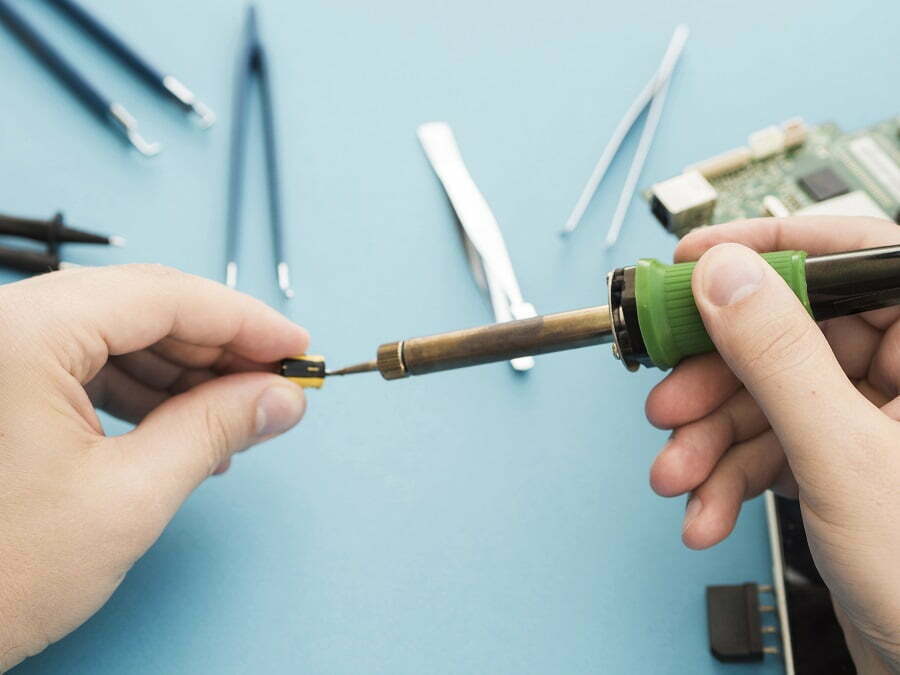Last updated on
A solder is a metal component used to join materials such as copper for a permanent bond. Soldering is the process undertaken to fix the metals together and involves melting the solder with a hot iron to ensure a stable and unbreakable connection.
Soldering is used on components across many sectors, including the electrical industry, and in equipment such as circuit boards and smartphones. Computers are also often fused together with soldering when being repaired. If your job involves soldering together any type of materials or components, you’ll probably need a selection of tools to assist.
This article will look at the types of soldering tools, how they work and what each one is used for.
Soldering Iron

A soldering iron is a tool used to join two surfaces. A hand-held piece of equipment, a soldering iron contains a metal tip and a handle as well as a heating element in the middle to enable soldering to take place. The iron is plugged into a socket or a specialized station, depending on the job.
There are different types of soldering irons available including lead or lead-free. Lead-free irons have an increased melting point, therefore it’s generally considered easier to work with lead soldering irons. Lead-free has become a popular choice in recent years due to the environmental concerns of lead.
Desoldering Wick vs. Desoldering Pump
Both of these tools can remove solder. Even though soldering is a permanent solution for joining metals, the process can be reversed using either a desoldering wick or pump.
A desoldering pump is a manual tool used to remove larger amounts of solder and consists of a tube with a plunger attached. The solder is melted and removed using suction via the pump. These tools are used for repair work and are unlikely to leave any damage to components so investing in a good desoldering pump is a good idea if you work with repairs or board connections.
A desoldering wick is used by pressing the string down onto the solder that needs removing. Under the heat, the solder melts and is absorbed by the wick, pulling it away from the surface. These tools are often used to remove smaller amounts of solder or to finish a larger job after using a desoldering pump. They are also useful for more detailed and intricate jobs requiring a neat removal of solder.
Whether you’re a professional or a hobbyist, if you work with components and equipment requiring soldering, a desoldering wick or pump will prove a useful piece of kit in your toolbox and make it easy to carry out your task quickly and with a neater finish.
Recap




